7 Crore+ Customers

Affordable Premium

7 Crore+ Customers

Affordable Premium


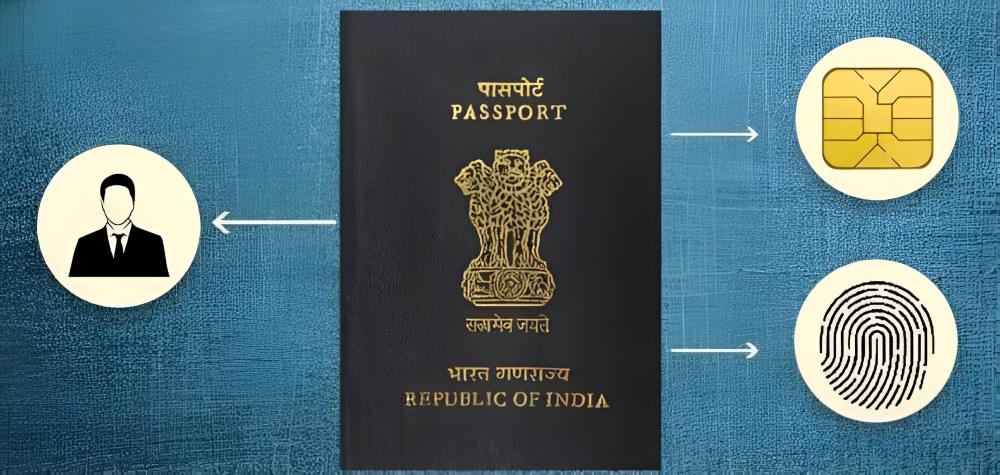
India has modernized its passports by replacing them with e-passports, which embed electronic chips to store biometric data such as fingerprints and facial recognition. This enhances the security and efficiency of travelling by reducing the risk of fraud and identity theft.
e-Passports use advanced technology that improves travel safety and convenience. They streamline border verification and immigration checks and have enhanced security features that make them tamper-proof. Indian citizens will soon be able to procure e-passports.
In this article, we will cover the key features, data storage, and benefits of e-passports in India, as well as the application process and what to do if an e-passport is lost while travelling abroad.


An e-passport, or electronic passport is also known as a biometric passport, contains a microchip that stores the holder's personal information, including their photograph and biometric data like fingerprint and facial recognition.
It enhances the transparency and security of travel documents by enabling the digital identification of essential details and storing crucial information, including photographs, fingerprints, and other personal data.
The unique benefits of e-Passport in India are -
Fast and Easy Scanning: Passengers with an e-passport can be scanned in a few seconds, allowing for shorter wait times.
Decrease Fraud Identity: e-Passport have biometric records of individuals, preventing fraudsters from stealing data and creating duplicate passports.
Tamper-Proof: e-Passport uses chip technology, and tampering will cause the passport authentication to fail.
Safe Data: The chip stores crucial data securely, preventing unauthorised alteration or deletion.
Hassle-Free Travel: e-Passport holders can use automated border control systems such as e-gates for quick airport entry and exit.
The e-Passport has 41 security features and is valid for 5 or 10 years, depending on the applicant's age.
Some of its features are -
Contactless Technology: e-Passports use contactless chip technology to store information in the passport. They are only readable by unique chip readers at a close distance, which speeds up immigration inspection and enhances border protection.
Store Information Securely: An e-passport contains an embedded chip that stores crucial biological information, such as fingerprint and facial recognition data, along with digital information, like personal details, digital signatures, and digital photography, for secure storage.
Biometric Information: The chip also contains a biometric identifier, such as a digital image of your passport photograph, which enables face recognition technology at entry and exit points.
Digital Signature Protection: The chip utilises digital signature technology to authenticate the stored data.
Data Protection: Once data is stored on an e-passport, it is permanently secured and cannot be deleted.
An e-Passport stores the biometric data of the passport holder. The essential data includes the following:
Personal Information: The passport holder’s full name, date of birth, nationality, and passport number.
Biometric Information: This includes fingerprints of the holder’s all 10 fingers and an iris scan.
Digital Information: This consists of the holder’s signature and coloured photographs.
E-passports are more secure than standard passports and can help prevent identity theft and fraud.
An e-passport works on the potential of the embedded rectangular antenna-type electronic chip of 64-kilobyte storage.
e-Passports store information securely encrypted and accessible only by authorized parties using unique readers. When the passport is scanned at immigration control points, the chip is accessed to verify the traveller's identity, enhancing security and reducing the risk of fraud.
Besides knowing what an e-Passport is, Indians must also know the makers of this innovation.
It has been developed by the association of three major technical institutes in India -
Indian Institute of Technology-Kanpur.
National Informatics Centre (NIC).
India Security Press and the Ministry of External Affairs officials.
Its inlay will comply with International Civil Aviation Organisation standards and work seamlessly worldwide. It is designed to prevent data access from any remote source.
Presently, e-Passports are used in around 120 countries worldwide. They also serve as proof of identity in various situations. E-passports are accepted in countries with automated border control and biometric verification systems.
Read here to know where else you can use an e-Passport:
Follow these steps to learn how to get e-passport and submit an application.
1. Visit the Official Passport website:
Go to the Passport Seva website, and click “Register Now” or log in with your existing ID.
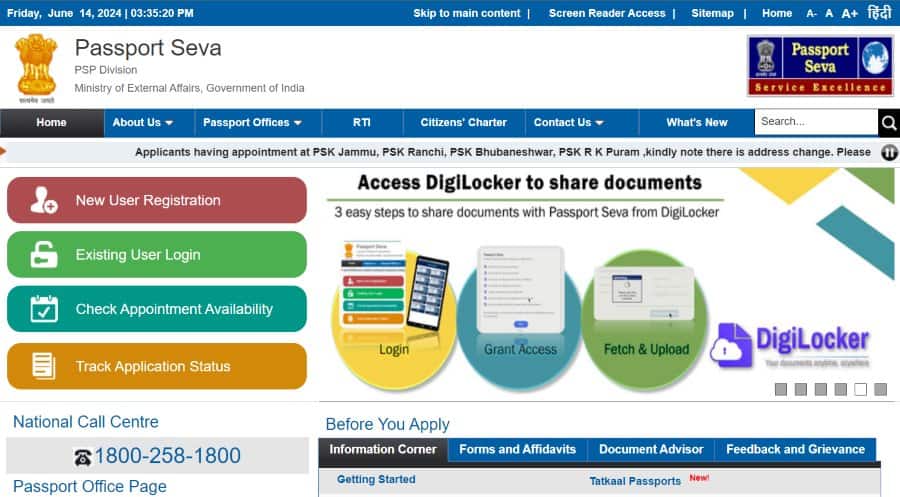
2. Click on “Apply for Fresh Passport”:
Choose between “Apply for Fresh Passport” or “Re-issue of Passport” as per your requirement.
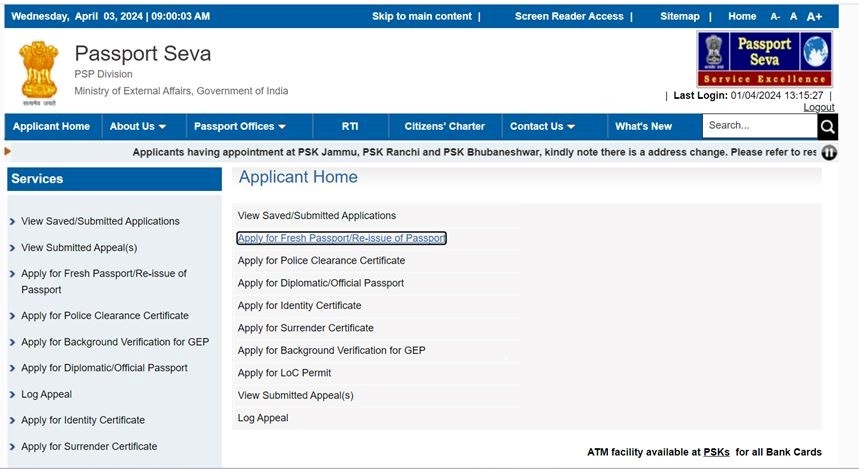
3. Fill out the Application Form Online:
Fill out the form online with accurate details.
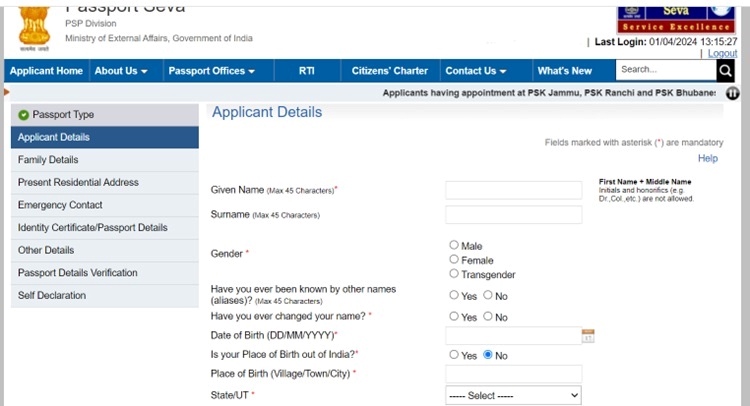
4. Upload all the Documents and Submit:
Provide all the required documents and click on the “Submit Form”.
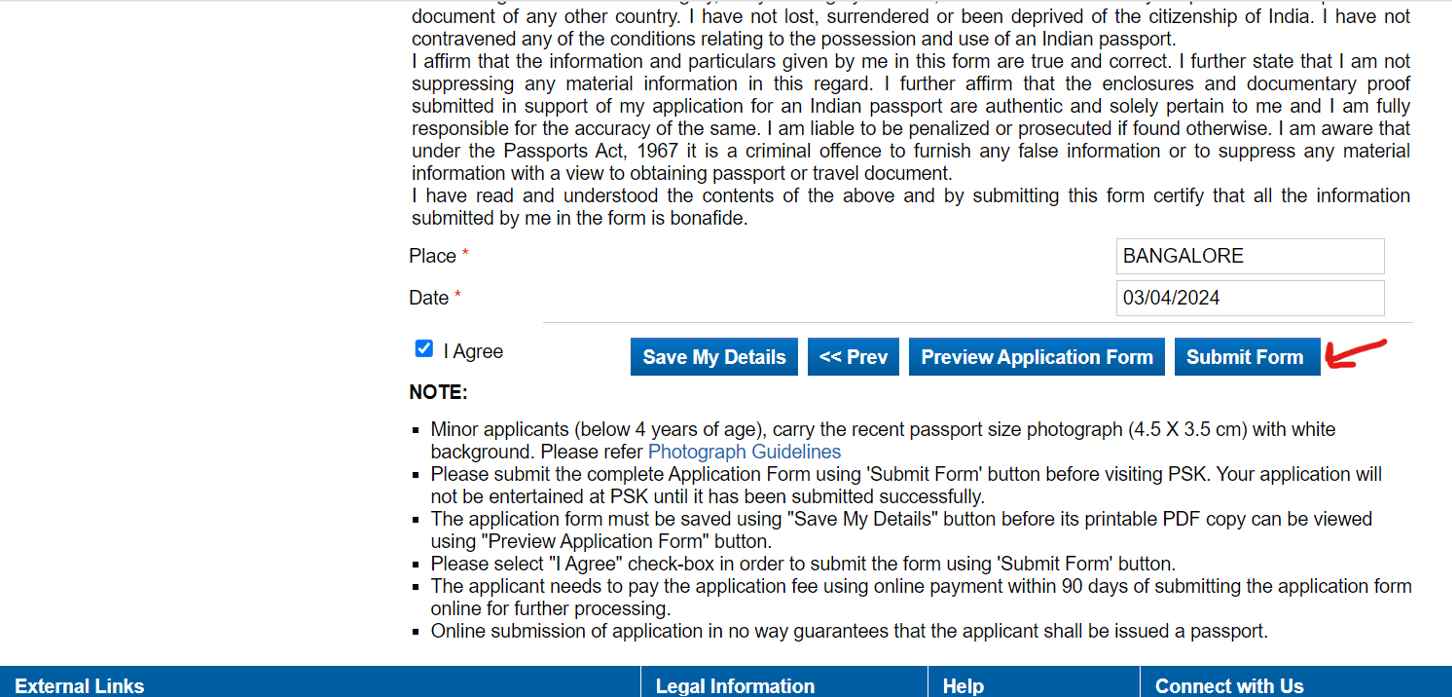
5. Pay and Schedule an Appointment:
Pay the applicable passport fees and schedule an appointment at the nearest Passport Seva Kendra (PSK).
6. Visit the Passport Office on the Schedule Date:
Visit the passport office on the appointment date to capture and verify your biometric details.
Here is how to get an electronic passport or e-passport follow these steps:
E-Passport required documents are the same as a regular passport. Applicants need the following documents.
Any of the following documents will serve as address proof
Aadhar card
Telephone bill
Electricity bill
Water bill
Gas connection
Rent agreement
Passbook of running bank account with attached photo (account with any scheduled private sector, public sector, or rural, regional bank)
Passport copy of spouse with first and last page with mentioned applicant name as a spouse. Also, the applicant's address should match the spouse's address on the passport
Note that individuals must furnish details of all the places they have resided in for the last year.
You can provide any one of the following documents can be given as proof of birth date -
Birth certificate from a legitimate authority
Matriculation, transfer, or school leaving certificate issued by the authority of leave and educational board stating the last date of school attending
Pan card
Aadhar card
Driving license
Voter Id card
Life insurance policy in the applicant’s name
Those with regular passports applying for re-issuance have to submit the following documents -
Original passport
Copy of the first and last page of the passport
Observation page
ECR or non-ECR page
Here are the differences between e-passports and regular passports.
Note: Passport fees for regular and e-passports are the same. Both types of passports are recognized internationally as proof of identity and citizenship.
If your passport is lost or stolen while abroad, you must report the loss to the nearest Police Station, Passport Office, or Indian Mission as soon as possible. You can then apply for a re-issue of your passport.
The application may require specific documents, and you must provide details from your previous passport, including the passport number, date of issue, etc. If you don't have these details, contact the Indian Mission/Post.
Now you know what an e-passport is and how it enhances security and speeds up passport verification during travel for both the government and citizens.